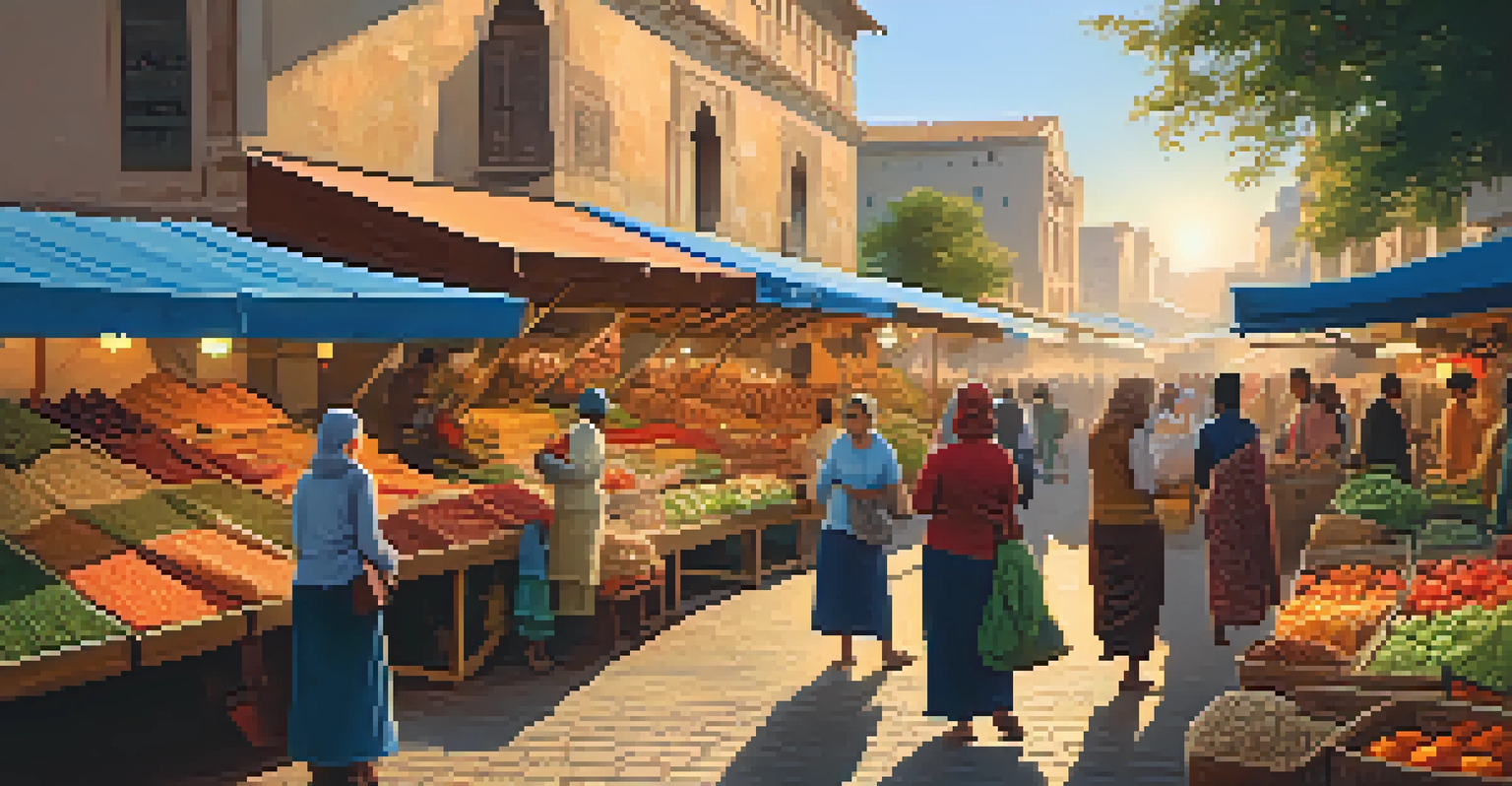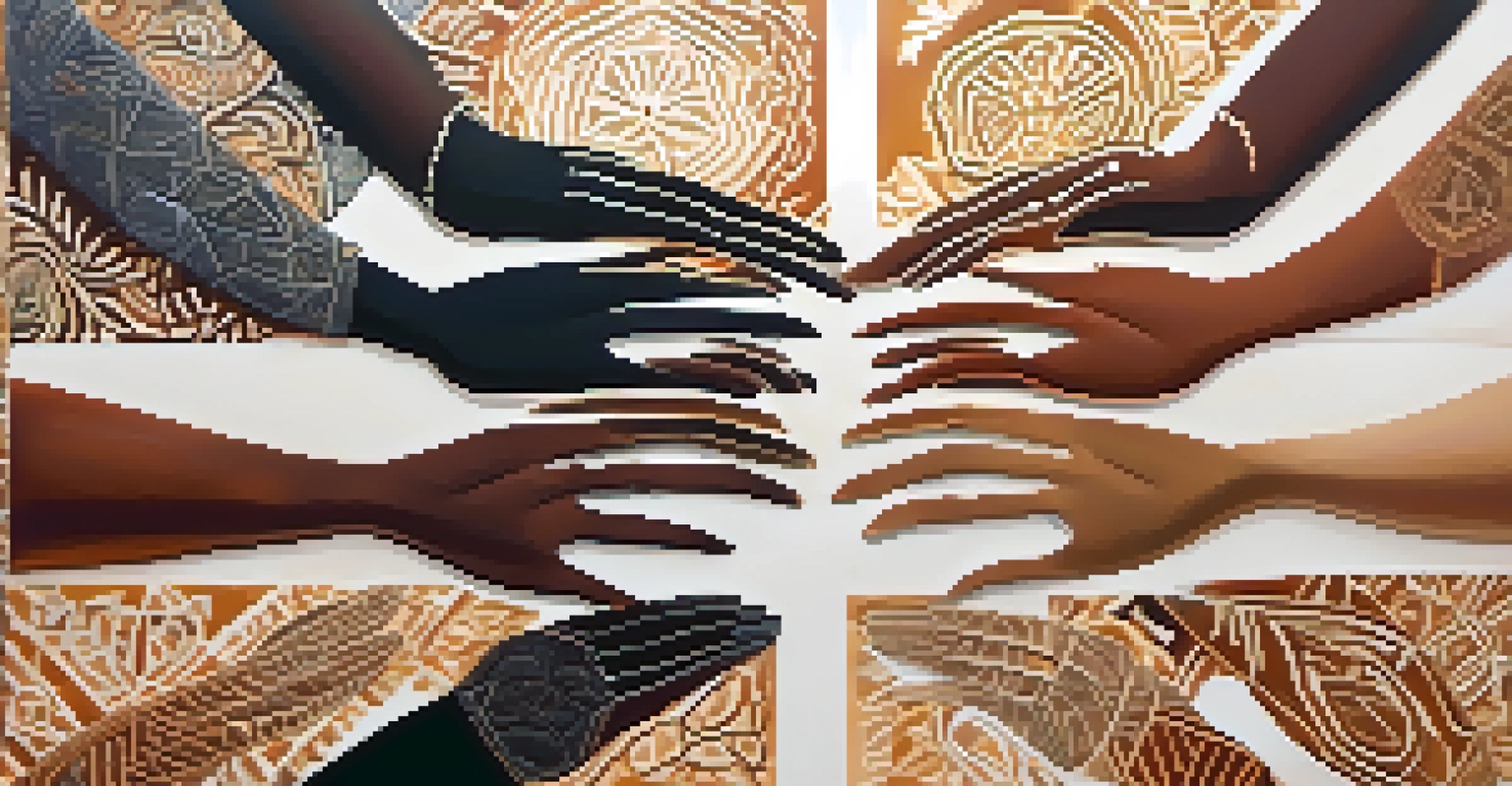The Importance of Historical Context in Art Interpretation

Historical Context: What It Means in Art Interpretation
Historical context refers to the circumstances surrounding the creation of a piece of art, including the time period, cultural influences, and societal norms. Understanding this context helps viewers grasp the artist's intentions and the message conveyed through their work. For instance, a painting created during a time of war may reflect themes of struggle and resilience that resonate differently than a piece made during a period of peace.
Art is the most beautiful of all lies.
When we consider the historical backdrop of an artwork, we unlock layers of meaning that might otherwise go unnoticed. This perspective allows us to see how artists respond to their surroundings, whether that’s through the colors they choose, the subjects they depict, or the techniques they employ. By incorporating this context, we can appreciate art as a reflection of its time, rather than as a standalone object.
Related Resource
Moreover, historical context can provide insight into the artist's personal experiences and influences. For instance, knowing the social issues that an artist was passionate about can deepen our understanding of their work. It transforms our viewing experience from a simple observation to a dialogue between the viewer, the artist, and the world they inhabited.
Cultural Influences: A Lens for Understanding Art
Culture shapes the way artists express their ideas and emotions, serving as a vital component of historical context. Different regions and communities have unique traditions, beliefs, and values that can inform the themes and styles present in their art. For instance, Indigenous art often incorporates spiritual elements that speak to the deep connection between the community and the land.

When we analyze art through the lens of cultural influences, we begin to see how artists communicate complex social narratives. A piece of artwork may reflect the struggles of a marginalized group or celebrate a local tradition, offering a glimpse into the artist's world. This understanding can enhance our appreciation of the diversity and richness of artistic expression across cultures.
Historical Context Shapes Art Meaning
Understanding the historical context of a piece of art unlocks deeper meanings and reveals the artist's intentions.
Additionally, cultural context can highlight the evolution of artistic styles over time. For example, the transition from classical to modern art reflects broader societal changes, such as the Industrial Revolution or shifts in philosophical thought. By recognizing these cultural markers, we can better understand how art evolves and responds to the world around it.
The Role of Political Climate in Art Creation
Politics plays a significant role in shaping the art of any given era, influencing both what is created and how it is received. Artists often use their work as a form of protest or commentary on political events, allowing them to voice their opinions and advocate for change. For example, works created during the Civil Rights Movement often depicted the struggles and aspirations of the time.
Every artist dips his brush in his own soul, and paints his own nature into his pictures.
Understanding the political climate of an artwork's creation can provide essential context for its interpretation. A piece created in a time of oppression may carry emotional weight that resonates with viewers on a personal level, while a work celebrating freedom may evoke feelings of hope and inspiration. This interplay between art and politics can deepen our emotional connection to the piece.
Related Resource
Furthermore, the reception of art can also be influenced by political factors. Censorship, government funding, and public opinion can shape which artists are celebrated and which are marginalized. By considering these aspects, we can recognize the broader implications of art within society and its potential as a catalyst for change.
Art Movements: Reflection of Historical Trends
Art movements often emerge in response to historical events, societal shifts, or cultural changes, creating a tapestry of interconnected works that reflect their time. Each movement, from Impressionism to Surrealism, carries with it the influences of the period it represents. For instance, the Post-Impressionist movement developed as a reaction against the limitations of Impressionism, reflecting a desire for greater emotional depth.
By examining these movements, we can see how artists collectively respond to the world around them. They often share common themes or techniques that reflect the challenges and triumphs of their society, acting as a mirror to the zeitgeist. This interconnectedness allows us to appreciate the evolution of artistic expression and the dialogue between different styles.
Culture Influences Artistic Expression
Cultural backgrounds inform the themes and styles in art, reflecting unique traditions and social narratives.
Moreover, understanding art movements provides a framework for interpreting individual works. Knowing that a piece belongs to a specific movement can guide our analysis, helping us identify recurring motifs or techniques. This context enriches our interpretation, allowing us to see how an artist’s work fits within a larger narrative.
Personal Narratives: The Artist's Backstory
The personal experiences of an artist can significantly influence their work, providing invaluable context for interpretation. An artist's background, struggles, and triumphs often inform the themes and emotions conveyed in their art. For instance, Frida Kahlo's work is deeply rooted in her personal pain and identity, allowing viewers to connect with her on an intimate level.
By exploring the artist's biography, we gain insight into the motivations behind their creations. This personal narrative can illuminate why certain subjects are chosen, why particular styles are employed, and how the artist’s life experiences shape their artistic voice. It transforms our understanding of the artwork from mere observation to a personal connection.
Related Resource
Additionally, an artist’s evolution over time can reveal how their experiences influence their work. Analyzing different phases of an artist’s career provides context for shifts in style or subject matter, highlighting the dynamic nature of creativity. This perspective allows us to appreciate the artist's journey and the impact of their life on their art.
Interpreting Symbols: The Language of Art
Art often employs symbols to convey deeper meanings, and understanding the historical context can clarify these messages. Symbols can vary widely across cultures and time periods, making it crucial to consider the context in which they were created. For example, a simple flower may symbolize beauty in one culture, while in another, it could represent mortality.
When we interpret symbols within their historical context, we can unlock richer meanings that enhance our understanding of the artwork. This exploration can reveal layers of interpretation that might otherwise remain hidden, allowing us to appreciate the complexity of the artist's message. It encourages us to think critically about what we see and how it relates to broader themes.
Politics Impacts Art Creation
The political climate during an artwork's creation can influence both its content and the way it is received by the public.
Furthermore, recognizing the significance of symbols can foster a deeper emotional connection with the artwork. By understanding what certain images represent, we can resonate with the artist's intentions on a more personal level. This connection not only enriches our appreciation of the piece but also invites us to engage with the themes it presents.
The Impact of Historical Context on Contemporary Art
Even in contemporary art, historical context remains a vital aspect of interpretation. Today’s artists often draw inspiration from past movements, social issues, and personal experiences, weaving them into their work. By understanding the historical influences on contemporary pieces, we can better appreciate the ongoing dialogue between past and present.
Many contemporary artists tackle modern issues such as climate change, identity politics, and global conflict, often referencing historical events or movements in their work. This connection allows viewers to recognize patterns and themes that transcend time, linking the past with the present. It also encourages us to reflect on how history continues to shape our society.

Moreover, engaging with the historical context of contemporary art can prompt discussions about the role of art in social change. Understanding how artists respond to their environment can inspire us to consider our own perspectives and the potential impact of art in addressing pressing issues. This reflection can transform our viewing experience into an active engagement with the world around us.